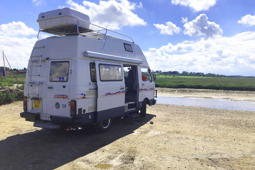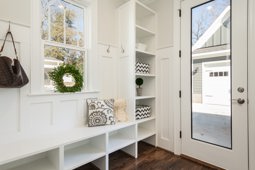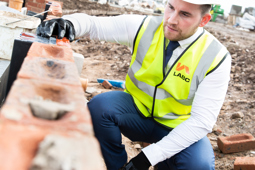Dear Anna,
I want to redo my bathroom and I was wondering whether I would need building regulation permission for it?
The short answer is it depends!
Things like replacing baths, sinks, or toilets in the same place (and if they are of a similar weight so don’t affect anything structural) then you won’t need to make a building regulation approval.
Changing things like heating, electrics or walls means you will need to make a building regulation approval and make sure the bathroom meets the requirements for structural stability, ventilation, electrical, and fire safety. Remember that cast iron baths filled with water exert huge pressure through small feet – so you’ll probably need to strengthen floor joists.
It’s unlikely you’ll need planning permission unless the bathroom is part of a new extension or in a listed building.
Alterations to an existing bathroom
If you’ve already investigated whether building regulations approval and planning permission are required then there are some other issues to consider before you start work – please see our checklist.
It’s really important that the bathroom is installed properly for hygiene, safety and to prevent water leaks so use a reputable tradesperson – follow our tips on choosing the right one.
If you’re altering an existing bathroom it’s a good opportunity to make it warmer and reduce condensation and mould. This can be done by upgrading or installing mechanical extract ventilation, replacing windows or including a trickle vent, dry lining the walls with insulation, and at the same time fitting a heated towel rail. (You may need building regulations approval for this work.)
Creating a new bathroom
If a bathroom is to be created in a room where there wasn't one before, building regulations approval is likely to be required. This will make sure the room will have adequate ventilation and drainage, define how you’re going to get hot and cold water supplied and how any new central heating pipework for radiators/towel rails will be fitted. In addition, waste pipes and drainage will need to be properly specified and installed.
If your soil and vent pipe is not in a convenient location, or if you need to pump waste to a different location, you will need a macerator. Other issues to consider when creating a new bathroom are water pressure (you may need to fit a shower pump for example) and electrics – a competent electrician can advise you.
Water safety and supply
Guidelines apply for supplying ‘wholesome water’ – water fit to use for drinking, cooking, food preparation or washing without any potential danger to human health. There are also alternative options for water used for toilet flushing, irrigation, etc (‘grey water’). If you are thinking of harvesting, reclaiming, or recycling water, then you should seek specialist advice.
'Wholesome' water would be expected to be supplied from the same source as the existing supply.
There is also a requirement for new homes that a Thermostatic Mixing Valve should be fitted to baths so hot water is limited to a maximum 48oC temperature to prevent scalding, particularly to young children. This isn't a requirement for existing homes but it is worth considering having one fitted.
Read 15 water saving tips for your bathroom
Read related articles on Front Door

Introducing Anna from Ask Anna
Read article
Builder’s total price higher than the original estimate? – Ask Anna Question of the Week
Read article
10 home renovation problems owners can avoid
Read article



